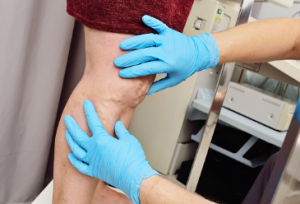Varicose Vein Treatment
The options for varicose vein treatment vary. Various treatments are available, including minimally invasive procedures, surgery, and compression stockings. However, all these treatments have their risks and side effects. Read on to learn more. In this article, we will discuss the side effects of the treatments and the pros and cons of each.
 Varicose veins can also lead to severe complications, such as ulceration and bleeding through the skin. In addition, phlebitis – inflammation of the veins and overlying skin – can make the area painful and uncomfortable. However, after successful varicose vein treatment, most patients experience a dramatic improvement in their appearance and quality of life. While there is a slight risk of infection, the procedure is safe and effective. Usually, the patient can return to normal activities within a week. Read on to make an informed decision on your varicose vein treatment.
Varicose veins can also lead to severe complications, such as ulceration and bleeding through the skin. In addition, phlebitis – inflammation of the veins and overlying skin – can make the area painful and uncomfortable. However, after successful varicose vein treatment, most patients experience a dramatic improvement in their appearance and quality of life. While there is a slight risk of infection, the procedure is safe and effective. Usually, the patient can return to normal activities within a week. Read on to make an informed decision on your varicose vein treatment.
Minimally invasive treatments
Regardless of the cause, there are many minimally invasive treatments for varicose veins, including laser surgery. Laser treatments, for instance, require no incisions or heat and are an excellent option for people with a small number of problem veins. Another minimally invasive procedure is sclerotherapy, which involves injecting a solution directly into the vein to make it collapse. This outpatient procedure is effective on smaller varicose veins, and patients can return to normal activities on the same day. Discover more here about this type of treatment.
Sclerotherapy is one of the most common minimally invasive Varicose Vein Treatment, and it can be used for larger and medium-sized veins. The sclerosant is injected through a catheter guided with duplex ultrasound. This procedure can be painful, but the results are typically permanent, with little to no downtime. Moreover, it is the least invasive option and does not require anesthesia or downtime.
Side effects of treatments
There are several options available for treating varicose veins, including surgery. Patients should seek the care of a board-certified vein surgeon who has completed a residency and fellowship in vascular surgery. It ensures that the surgeon is at the highest competency level and minimises the risks of side effects. In addition, the doctor can provide more information on the available options and how they affect your health.
Compression stockings
Compression stockings are an essential part of Varicose Vein Treatment Adelaide. These devices improve blood circulation, reduce swelling, and minimise bruising and clotting. Compression stockings should be worn from when you wake up until they are removed in the evening. If you’re prone to pain, consider using baby powder on your legs before putting them on. You may also want to roll your stockings down completely before putting your foot into them.
The most important thing to remember about compression stockings is the fit. They will not provide the proper pressure to improve the condition if they are too tight. Similarly, they won’t do much good if they’re too loose. Using compression stockings after varicose vein treatment will not cure the condition, but it will help control the symptoms and help you prevent them from worsening.
Surgery
The recommended way to prevent varicose veins is to make lifestyle changes. For example, increasing physical activity and avoiding standing for long periods are some ways to reduce the symptoms. Similarly, you can reduce the risk of infection by following a healthy diet and weight management routine. Using compression stockings can also help you heal the varicose veins naturally. But before you get the procedure, you must talk to your doctor about what type of anesthesia you require. Discover more here about this type of treatment.
Most varicose vein surgery procedures are outpatient and take approximately 60 to 90 minutes to complete. More advanced procedures may take longer. For example, you may be given spinal or general anesthesia. The former puts you to sleep during the procedure, while the latter numbs your lower body. The former leaves you conscious but sleepy during the procedure. Your doctor may also prescribe an anti-anxiety medication. While these procedures may sound scary, they are not invasive and result in minimal pain and no visible scars.
